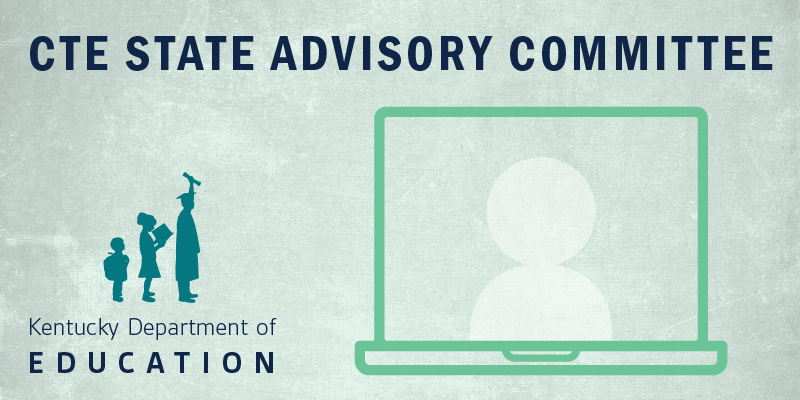
(FRANKFORT, KY) – The Kentucky Department of Education’s (KDE’s) Career and Technical Education (CTE) Advisory Committee discussed legislative highlights and the impact recently approved legislation will have on CTE funding during the committee's meeting on May 2.
Regan Satterwhite, executive advisor for KDE’s Office of Career and Technical Education, said there are a lot of positive things to take away from this year’s legislation session, particularly the biennium budget bill, House Bill 6.
“House Bill 6 did some great things for career and technical education. Keeping the level of CTE supplemental funding at the same level as the 2022 biennial budget is a great amount to provide to our CTE programs,” said Satterwhite.
The supplemental funding grant, which will be allocated to district CTE providers, remained at $70 million for each of the next two fiscal years.
In addition, House Bill 6 provided $50 million for Area Technology Center (ATC) renovations. Satterwhite said the allocation amounts are capped at $10 million each and will be divided up between multiple ATCs.
Satterwhite also said the department is excited that House Bill 6 provided funds for KDE’s U.S. Army JROTC pilot program.
State employees, including educators at ATCs, will also receive a 3% raise on July 1 of this year and next year.
CTE Funding Formula
Satterwhite also updated advisory committee members about House Bill 499, which addressed the overall state allocation for CTE funding. The bill was introduced during the legislative session by Rep. Bobby McCool, a member of the CTE advisory committee, and will become effective July 1.
“As we discussed this back in the (committee’s) November meeting, this bill will do several things for career and technical education funding in the way that it is allocated to districts in Kentucky,” said Satterwhite.
Satterwhite said previous allocations were distributed solely based on student enrollment in these programs. Going forward, the funding will be distributed in one lump sum allocation based on two categories: base CTE funding determined by total student enrollment in qualifying programs and performance-based funding determined by the number of students who earn performance incentives.
Holly Tracy, a KDE data manager, said that 60% of the base CTE funding will be determined by weighted full-time equivalent (FTE) enrollment based on term one attended hours entered in the Technical Education Database System (TEDS).
“The enrollment data comes from students in grades 9-12, and the FTE data is pulled and uploaded to TEDS by November 15 of the prior school year,” said Tracy.
Tracy explained that 40% of the funding allocation will be based on performance incentives earned across four indicators, with each indicator weighted at 10%.
Those four indicators are as follows:
- Concentrator status: a student who has earned two credits or more in a pathway;
- Technical Skills Attainment: a student who has earned a valid industry certification or CTE End-Of-Program assessment certification;
- Dual Credit: a student who has earned an approved CTE dual credit with a grade of “C” or above;
- Work-Based Learning: successful completion of approved CTE work-based learning where the student completed 300 or more hours of on-the-job training.
Tracy said a student can earn multiple incentives. If a student earns all four indicators, funding will be reflected one time for all four indicators. Tracy said the calculation will include students in grade 12 who earned an incentive over their high school career and graduating cohorts from two years prior.
“One good thing about the legislation is that it does encourage stackable credentials,” said Satterwhite. “We know what's best for students is to continue having them achieve credentials.”
Increase in CTE Enrollment
Beth Hargis, associate commissioner in KDE’s Office of Career and Technical Education, shared data relating to the increase in student and educator participation in CTE programs.
“In 2021, eight out of ten secondary students participated in CTE pathways and programs, which is an 11% increase from 2021-2022,” said Hargis. “CTE is trending in a very positive way. In the 2022-2023 school year, over 25,000 students graduated with at least one postsecondary credential.”
Hargis said that 54% of students completed at least two credits in a four-course CTE pathway.She said she credits this increase to the awareness of early postsecondary opportunities and the expansion of early exposure to CTE in elementary and middle schools.
“We just really appreciate the buy-in that districts have in believing not only that CTE works, but also that CTE pathways and programs are for all students,” said Hargis.
|